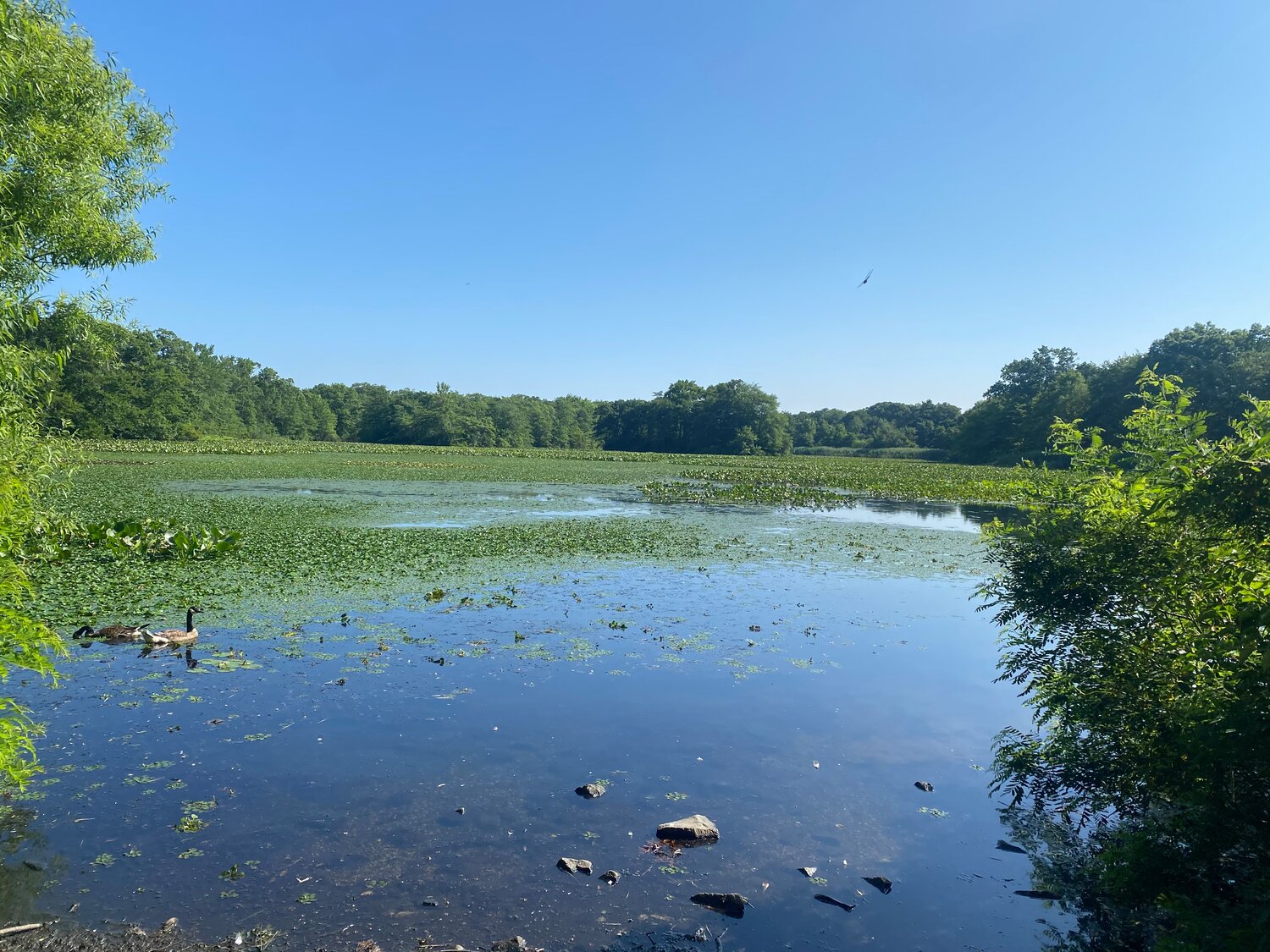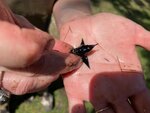Volunteers clean up Mill Pond, one invasive species at a time
Mill Pond, in south Wantagh, is now a little cleaner thanks to the efforts of state officials and volunteers to rid the small lake of water chestnuts — an invasive species that can be harmful to hikers and water birds.
The state’s Department of Environmental Conservation hosted its annual water chestnut pull on July 5, putting volunteers to work in either waders or kayaks — which are not typically allowed in Nassau County’s freshwater bodies, but an exception was made for this event. State Sen. Steve Rhoads and his staff also took part in the cleanup.
Water chestnuts have taken over Mill Pond, which is just off of Merrick Road, and appear to be out-competing the native vegetation. While the plant does create some habitat for the fish in the pond, it’s not ideal habitat, because it reduces oxygen levels in the water, according to DEC officials.
The water chestnut also makes it more difficult for recreational anglers to catch anything, because it often tangles their lines — and Mill Pond has no shortage of fish to catch, with species including bluegill, largemouth bass, pickerel, catfish, carp, yellow perch, American eel and, unlike many other lakes in the area, white perch.
Heidi O’Riordan, a DEC freshwater fisheries manager and biologist, said the problem first arose just to the east, at Massapequa Reservoir, and she speculated that water chestnuts might have been introduced as a household plant that someone tossed in the water.
“It’s an attractive-looking plant,” O’Riordan said. “It probably came as an ornamental from someone’s aquarium. It doesn’t take much, because the seed pods can survive 10 to 12 years.”
The chestnuts contain sharp spikes, which can stick to water birds, contributing to the plant’s spread to other ponds — which, most likely, is how they were transplanted from Massapequa Reservoir to Mill Pond.
“When you look out on the water body here, you really only see a few types of plants,” O’Riordan said of Mill Pond’s surface. “Right off the top layer, this should be a whole host of native plants. Water chestnut outcompetes that, and then when it breaks down at the end of the summer season, it puts another stress on the water body by depleting oxygen as it decomposes.”
The Mill Pond cleanup has taken place annually for about eight years, and although DEC officials said they appreciate the community’s efforts, the state would like to take care of the problem once and for all. Experts expressed the hope of deploying a harvester in the pond that would stop water chestnuts from reproducing.
“It’s a management option,” O’Riordan said. “And some areas of the pond are better this year, thanks to the pull we did last (year). But the real solution is a harvester. We’ve seen the difference a harvester made with getting rid of the chestnut in Massapequa.”
Getting a harvester into the pond would be no easy task, officials said. Despite its proximity to Massapequa Reservoir, Mill Pond, Massapequa Lake and the nearby Twin Lakes Preserve — which also has a water chestnut infestation — fall under different jurisdictions.
Last Wednesday, however, volunteers made a visible difference in Mill Pond, filling dozens of trash bags with the plants. Rhoads has always been an active participant in the cleanup, and this time he took a kayak out on the water.
“Mill Pond was a place where you could go swimming,” Rhoads, who grew up in Wantagh, said. “It was a place where, in the wintertime, you could go ice skating. It used to be clear for fishing. Now, with the invasive species, with water chestnuts taking over and water lilies taking over, it chokes off marine life, and it takes away the opportunity to be able to use it (and) enjoy the lake. This effort is a drop in the bucket, but it’s an opportunity for us to get out there and try and do something positive for the environment.”

 80.0°,
Partly Cloudy
80.0°,
Partly Cloudy 







